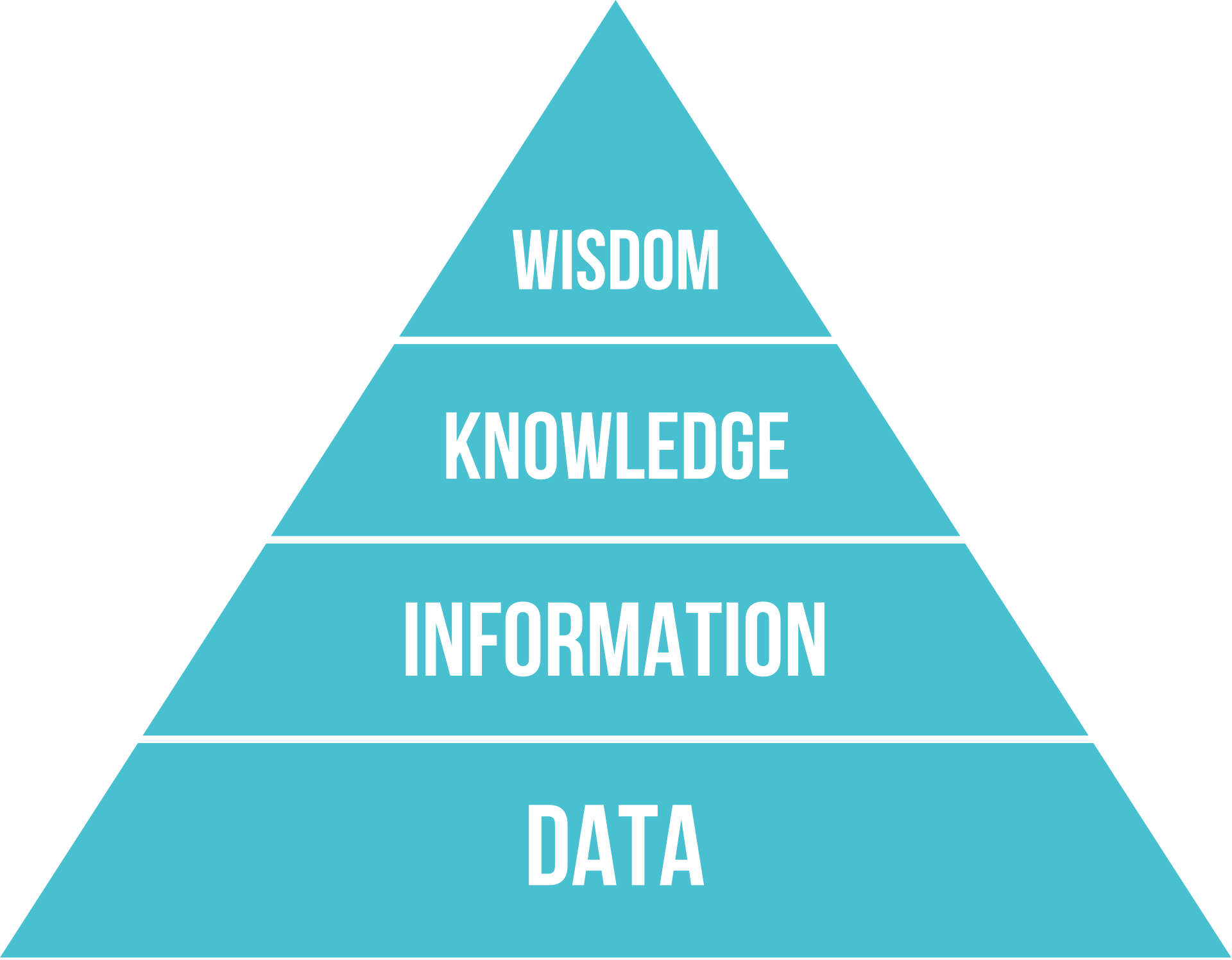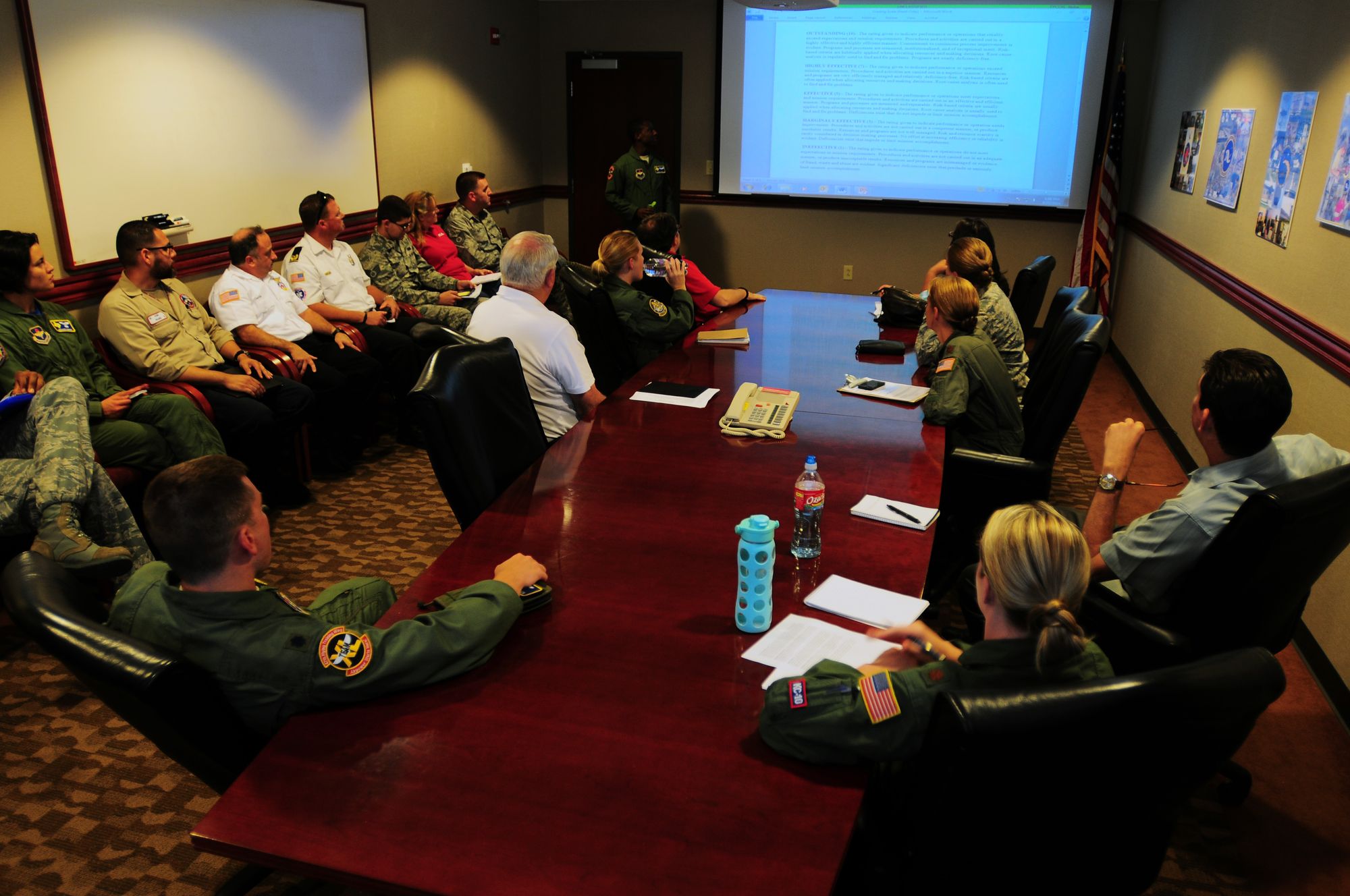The Right Space Domain Knowledge at the Right Place and Time
Space Domain Awareness is in the business of producing knowledge to enable decision-making. How does the right knowledge get to the right place at the right time?

Having the right knowledge at the right time in the right place to render a decision. That's the dream. How is this done for Space Domain Awareness? How does it fit into workflows? What does it mean for decision-makers? What types of Space Domain Awareness architectures does it suggest?
Knowledge Management is a critical component of a Space Domain Awareness (SDA) 'system of systems,' and their purpose of providing decision-makers with timely and quality knowledge. SDA Knowledge Management Systems can be centralized or distributed, use 'push' or 'pull' knowledge generation and curation strategies, or leverage hierarchical or relational databases for knowledge discovery. When used in the United States Space Force (USSF) or Civil Space Traffic Management applications, the right SDA Knowledge Management System depends on the use case.
In this article, we will 1) review knowledge definitions, hierarchies, and production, 2) learn about Knowledge Management Systems, and 3) consider what Knowledge Management architectures and use cases make sense for SDA. We'll summarize four principle conclusions.
Onward!
1) Knowledge Recap
Data-Information-Knowledge-Wisdom Framework
Initially proposed by Ackoff in 1989, the data-information-knowledge-wisdom (DIKW) pyramid provides a framework witch which to understand how raw data may be transformed into knowledge or wisdom.

Summarizing DIKW literature in 2007, Rowley wrote:
"The data–information–knowledge–wisdom hierarchy (DIKW), referred to variously as the ‘Knowledge Hierarchy’, the ‘Information Hierarchy’ and the ‘Knowledge Pyramid’ is one of the fundamental, widely recognized and ‘taken-for-granted’ models in the information and knowledge literatures." (pg. 163, 164, The wisdom hierarchy: representations of the DIKW hierarchy)
"The hierarchy is used to contextualize data, information, knowledge, and sometimes wisdom, with respect to one another [...]. The implicit assumption is that data can be used to create information; information can be used to create knowledge, and knowledge can be used to create wisdom." (pg. 164, The wisdom hierarchy: representations of the DIKW hierarchy)
I encourage the reader to dig into Rowley's summary of DIKW definitions and literature. Perhaps that is the topic for a future article.
So, we have a framework to discuss how raw input data can be converted to knowledge or wisdom. How is this related to SDA systems?
Types of Knowledge
Going further down the rabbit hole, we arrive at differentiating between types of knowledge.
In much of the Knowledge Management Literature, there are two types of knowledge - Explicit and Implicit. Some short definitions from the Harvard Business Review article, The Knowledge-Creating Company, by Ikujiro Nonaka are worth reading.
Explicit Knowledge
"Explicit knowledge is formal and systematic. For this reason, it can be easily communicated and shared, in product specifications or a scientific formula or a computer program." (The Knowledge-Creating Company, https://hbr.org/2007/07/the-knowledge-creating-company)
Tacit Knowledge
"Tacit knowledge consists partly of technical skills—the kind of informal, hard-to-pin-down skills captured in the term “know-how.” A master craftsman after years of experience develops a wealth of expertise “at his fingertips.” But he is often unable to articulate the scientific or technical principles behind what he knows." (The Knowledge-Creating Company, https://hbr.org/2007/07/the-knowledge-creating-company)
"At the same time, tacit knowledge has an important cognitive dimension. It consists of mental models, beliefs, and perspectives so ingrained that we take them for granted and therefore cannot easily articulate them. For this very reason, these implicit models profoundly shape how we perceive the world around us." (The Knowledge-Creating Company, https://hbr.org/2007/07/the-knowledge-creating-company)
Space Domain Awareness Systems Manufacture Knowledge
In another article, I discuss how SDA systems are knowledge factories. That is to say, the purpose of SDA systems is to produce knowledge and enable timely and quality decision-making.

Naturally, then, we should care deeply about how knowledge is produced and what happens to knowledge after it is produced.
2) Knowledge Management Systems
What Are They? Why Would You Want Them?
Knowledge Management systems curate, connect, contextualize, and teach knowledge to enable decision-making in pursuit of objectives.
Does that sound similar to elements of SDA systems? Let's dig a little deeper.
Examples of Knowledge Management systems spread across just about any application area where decisions are made in pursuit of objectives. There are over 100 definitions collected by Girard & Girard in 2014 with application in accounting, aerospace, archivists, artificial intelligence, content management, defense, development, education, energy, engineering, finance, government, health, human resources, information and library science, information management, information technology, law, management, science & technology, statistics, and systems thinking
Within these areas, Knowledge Management is defined with small variations depending on the topic of application. It boils down to decision-making in pursuit of objectives.
Relevant to SDA, U.S. Army Doctrine gives the following:
"Knowledge management (KM) is the process of enabling knowledge flow to enhance shared understanding, learning, and decision making." (Techniques for Effective Knowledge Management - Army Doctrine, ATP 6-01.1, 2015)
NASA defines KM as:
"Knowledge management practices are the methods an organization uses to retain and pass along the knowledge produced by its workers, including libraries, archives, in-house magazines, and mentoring." (NASA Project / Program Management Resource List No. 51)
The Intelligence Cycle, a method for asking questions, gathering evidence, and identifying new questions, and decision-making is another example of a Knowledge Management system. In this case, a central outcome is an Intelligence Assessment, which is perhaps a combination of Knowledge and Wisdom, as defined earlier.
Why would you want a Knowledge Management system? Knowledge Management systems improve the quality and timeliness of decision-making in SDA. They enable decision-makers to find the right information at the right time, in the right place.
Indeed, in Rowley's conclusion:
"If the purpose of information systems and knowledge management initiatives is to provide a basis for appropriate individual and organizational actions and behaviour more researchers and practitioners need to engage with the debate about the nature of individual and organizational wisdom." (pg. 178, The wisdom hierarchy: representations of the DIKW hierarchy, emphasis added by M. J. Holzinger)
Blimey, that's just what we're doing here!
Let's focus more on SDA systems.
3) Knowledge Management as a Component in Space Domain Awareness
Part of a System of Systems
We've discussed how SDA systems are 'systems of systems,' meaning that they are composed of a variety of mutually supporting systems that generate out outcome beyond the mere sum of their parts.
Initially we may be tempted to say that SDA systems are instances of Knowledge Management Systems. That is not the case. Such an assertion neglects that SDA systems include the infrastructure, collection assets, and knowledge production chains - not just how knowledge is managed after it is generated. Knowledge Management Systems are an element of SDA systems.
Because we desire robustness in decision-making, SDA systems should be capable of disaggregation and local independent operation in the event of disruption or cascading failures. This suggests something similar to an edge computing (edge-decisioning?) architecture.
This architecture is manifest in Air Traffic Control (ATC), where local airport, regional, and national air spaces have localized decision-making needs..
(Yes, the ATC does use the term Situational Awareness for local awareness, emphasizing the difference between Situational and Domain Awareness.
Wetware
How can we make sure that decision-makers have the right information at the right place at the right time?
To start, knowledge needs to make its way to the wetware between decision-maker ears.

This relies upon an incredibly complex and ongoing research topic of Human Factors / Cognitive Engineering. A recent summary focusing at the Space Situational Awareness (SSA) level discusses Cognitive Engineering in SSA Decision-Making in depth..
One interesting outcome is that:
"[A]nalysis of the work domain highlighted deficiencies in existing approaches to sensor tasking, including a lack of robust and clear mappings from sensor tasking priorities (i.e., catalog maintenance) on overarching domain goals and priorities." (Cognitive Systems Engineering Applied to Decision Support in Space Situational Awareness)
Here, I'll emphasize that sensor tasking is a type of decision-making enabled by and supporting SDA systems. While these systems are semi-autonomous, prioritization is determined by decision-makers.
So, clearly, the DIKW production chain must account for human operators and it seems more work needs to be done there. This is true even for centralized SDA systems.
Next, we add another twist. Because SDA systems enable decision-making, principles of Mission Command are often useful. In the context of United States Space Force SDA systems:
"Mission Command is the conduct of military operations through decentralized execution based on mission-type orders, which enables tactical-level initiative." (pg. 41, Spacepower - Doctrine for Space Forces)
"Mission Command also assumes that in the presence of degraded or denied communications, tactical unites must still be able to react on relevant timelines without prescriptive orders from high-headquarters." (pg. 41, 42, Spacepower - Doctrine for Space Forces)

So, if 1) decision-making is decentralized and potentially tactical and 2) timely and quality knowledge enables timely and quality decision-making, then SDA Knowledge Management Systems must be compatible with decentralized and tactical use cases.
The term 'timeliness' increases the complexity of this engineering problem.
If the knowledge doesn't support decision-making, it may be cluttering the headspace of the decision-maker. Further, how long should one wait for new knowledge to make decisions?
Harvard Professor Richard Zeckhauser is well known for emphasizing this link in his maxim:
"[Knowledge] is only valuable if it can change [a] decision." (pg. 116, Maxims on Thinking Analytically)
And its sibling:
"Don’t wait for [Knowledge] if it won’t change [a] decision." (pg. 120, Maxims on Thinking Analytically)
Human Factors & Cognitive Engineering researchers and practitioners - looks like you've got lots of fun problems to tackle!
SDA Knowledge Management Strategies
We've established that USSF needs necessitate distributed, tactical time-frame knowledge generation and management. Other SDA systems focused on Civil Space Traffic Management or Planetary Defense may be comfortable with centralized and less tactical Knowledge Management Support Systems.
Nevertheless, several knowledge capture strategies and knowledge curation approaches merit discussion.
Two knowledge capture approaches are Push and Pull strategies.
In Push strategies, individuals or system components generating knowledge are required to or incentivized to directly insert new knowledge. This is sometimes called active knowledge management. Knowledge is entered into a database, and decision-makers retrieve relevant knowledge from a database. Knowledge codification, refactoring, and other machine learning techniques are often applicable and used. This closely resembles standard operating practices for current US Civil Space Traffic Management and USSF SDA architectures. Unless something alarming happens and merits specific as-yet-unobtained knowledge.
Connecting this to the 'Mark-H Johari Window', this works well for producing knowledge of 'known-knowns,' when we have a question or hypothesis in-hand and also possess ample data / information to generate needed knowledge.
Pull strategies, on the other hand, are used when decision-makers request specific knowledge. These requests are then parsed, assigned to expert analysts / systems, and data is transformed to knowledge. The resulting knowledge is then passed along to the decision-maker and curated within the Knowledge Management System. Pull strategies closely resemble traditional Intelligence Cycles, and the produced knowledge is generally called an Intelligence Assessment. Activities within the Intelligence Community often fit this description.
Any SDA system with a question, but no data could potentially use this strategy.
With all of the combinations of whether we've posed a question and have evidence to answer the question (e.g., the quadrants of the 'Mark-H Johari Window'), all SDA Knowledge Management Systems stand to benefit from both Push and Pull strategies.
The after-action hot-washes, assessments, or the knowledge spiral exercises can be very beneficial to improving the quality of a SDA Knowledge Management System.

I've neglected to mention the human side of the Knowledge Management problem. There are certainly elements of Knowledge Management that depend heavily on cognitive workload, incentives, quality control, knowledge accessibility & comprehension, communications, and culture. At this point we're far enough away from any expertise I may have. I'll simply say that those are excellent and impactful questions to answer when implementing a SDA Knowledge Management System.
In any event, knowledge must be stored in such a way that it can be retrieved or discovered by the right decision-maker at the right time, in the right place.
What Database Structure to Use?
So how should SDA Knowledge Management Systems store their data?
Several hierarchical and non-hierarchical database structures recommend themselves.
Hierarchical Databases are tree structures. A taxonomy is an example. So is a computer file structure. Knowledge that lends itself to classification can perform well in these situations. Relational tables, trees, and lists are all excellent examples of ways to store and present knowledge hierarchically. In hierarchical databases, each entry can have only one parent.
In terms of decision-making, Hierarchical databases shine when the user knows what knowledge they're looking for.
Non-Hierarchical Databases, generally called relational databases, support a broader array of connection types between entries. Entries are not required to have a single parent - they can have many lateral or relatively unstructured relationships with other entires. Tags, hashtags, labels, and links (both directional and bidirectional) are all examples of different relations between entries.
For decision-making, Non-hierarchical databases are excellent for knowledge discovery and exploration.

Which type of database structure should SDA Knowledge Management Systems use?
Both have their advantages, so both should be used. But that's not a good answer.
Non-hierarchical (relational) databases may be best, because they can use labels or directional links to overlay hierarchical structure for navigation purposes on top of the more unstructured relational labels. Such an approach allows easy navigation when the user knows what knowledge they're looking for, enable unintended knowledge discovery, and allow for emergent structure.
Summary
We've covered a lot of ground, reviewing knowledge hierarchies and types, Knowledge Management Systems, their links to decision-making and knowledge generation, as well as how they might apply to Space Domain Awareness systems. There are four principal outcomes of this discussion:
- Data-Information-Knowledge-Wisdom (DIWK) Hierarchies and Knowledge Management Systems are necessary components of SDA systems in their role as knowledge factories.
- Human Factors and Cognitive Engineering considerations are central for SDA systems and their constituent Knowledge Management Systems. They are also excellent topics for enterprising researchers and practitioners.
- Principles of Mission Command require SDA Knowledge Management Systems be a) distributed, b) timely, and c) parsimonious.
- SDA Knowledge Management Systems must be purpose-built to enable timely and quality decision-making. A combination of push / pull knowledge management strategies and simultaneously distributed, hierarchical, and non-hierarchical database structures are needed.
This article is longer than intended; I'll consider it a success if it stimulates productive discussion!
Subscribe to the Newsletter
If you enjoy this content, show your support by subscribing to the free weekly newsletter, which includes the weekly articles as well as additional comments from me. There are great reasons to do so, and subscriptions give me motivation to continue writing these articles! Subscribe today!


